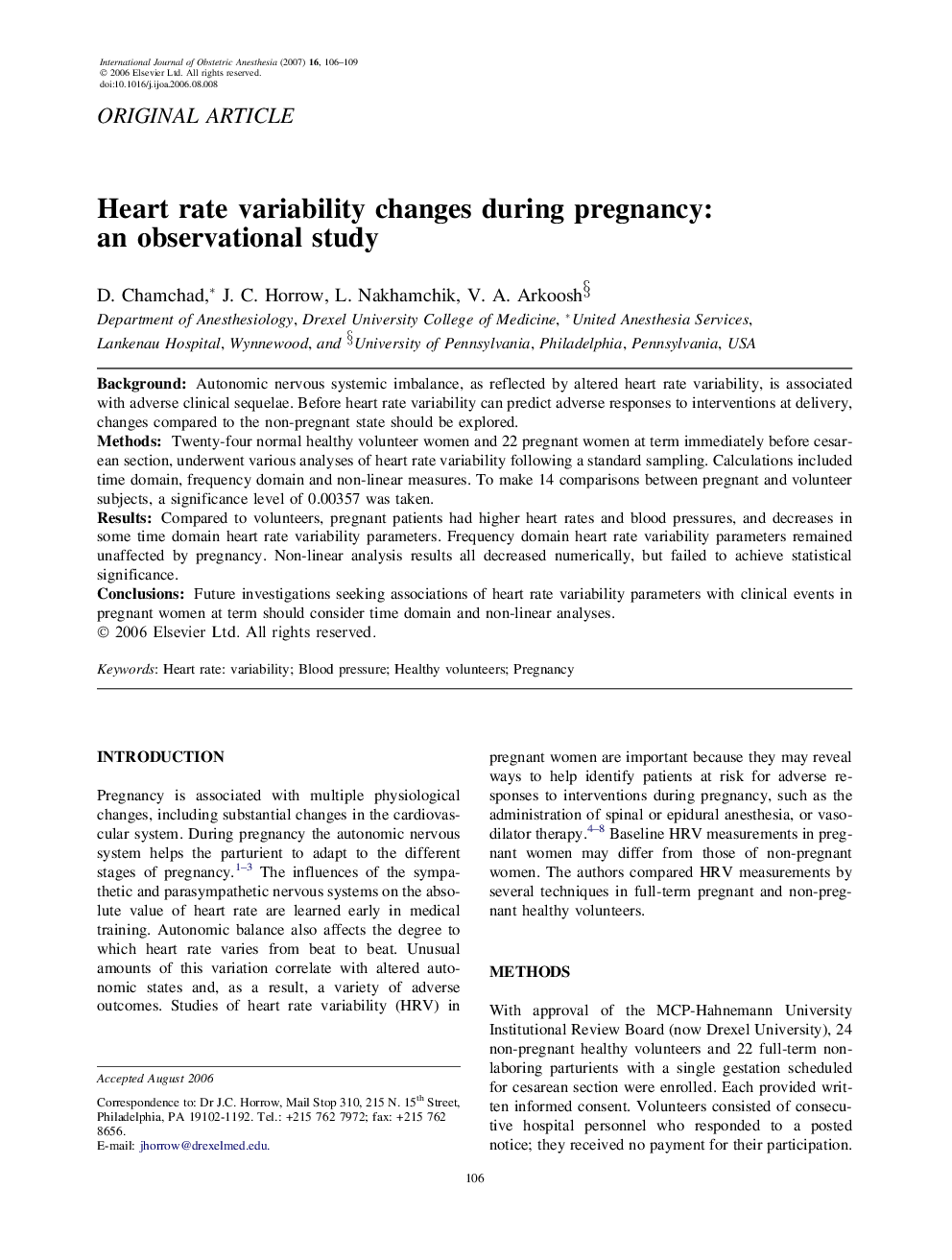| Article ID | Journal | Published Year | Pages | File Type |
|---|---|---|---|---|
| 2758319 | International Journal of Obstetric Anesthesia | 2007 | 4 Pages |
BackgroundAutonomic nervous systemic imbalance, as reflected by altered heart rate variability, is associated with adverse clinical sequelae. Before heart rate variability can predict adverse responses to interventions at delivery, changes compared to the non-pregnant state should be explored.MethodsTwenty-four normal healthy volunteer women and 22 pregnant women at term immediately before cesarean section, underwent various analyses of heart rate variability following a standard sampling. Calculations included time domain, frequency domain and non-linear measures. To make 14 comparisons between pregnant and volunteer subjects, a significance level of 0.00357 was taken.ResultsCompared to volunteers, pregnant patients had higher heart rates and blood pressures, and decreases in some time domain heart rate variability parameters. Frequency domain heart rate variability parameters remained unaffected by pregnancy. Non-linear analysis results all decreased numerically, but failed to achieve statistical significance.ConclusionsFuture investigations seeking associations of heart rate variability parameters with clinical events in pregnant women at term should consider time domain and non-linear analyses.
